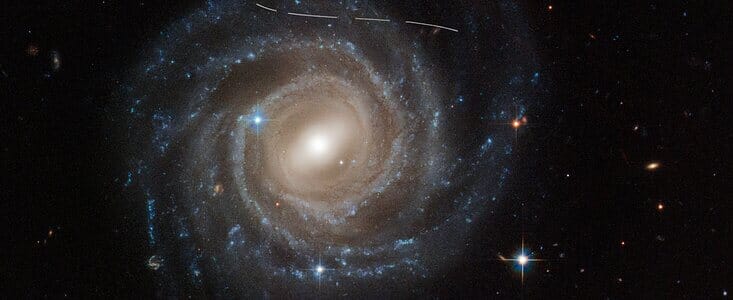Astronomers re-examined 37,000 images taken by Hubble over 19 years of objects in deep space. The reward was finding 1701 asteroid orbits in the asteroid belt, of which 1031 are uncatalogued asteroids. About 400 of these uncatalogued asteroids are roughly less than a kilometer in size

Astronomers recently used a collection of archival images taken by the Hubble Space Telescope to visually capture a largely unseen population of small asteroids in their orbits. The search required an examination of 37,000 images taken by Hubble over 19 years. The reward was the finding of 1701 asteroid orbits, of which 1031 are uncatalogued asteroids. About 400 of these uncatalogued asteroids are roughly less than a kilometer in size.
Volunteers all over the world, "citizen scientists", contributed to the identification of this asteroid treasure. Professional scientists combined the volunteer work with machine learning algorithms to identify the asteroids. It's a new approach to finding asteroids in astronomical archives spanning decades, and it can be effectively applied to other data sets, the researchers say.
"We are deepening the view of the smaller population of the asteroid belt. We were surprised to see such a large number of potential objects," said lead author Pablo Garcia Martin from Spain. "There have been hints of the existence of this population, but now we are verifying it using a random sample of the asteroid population that we obtained through the entire Hubble archive. This is important to gain insights into the developmental models of our solar system."
The large random sample offers new insights into the formation and evolution of the asteroid belt. Finding many small asteroids supports the idea that they are fragments of larger asteroids that collided and broke apart, like smashed pottery. It's an erosion process over billions of years.
An alternative theory for the presence of small fragments is that they were formed this way billions of years ago. But there is no plausible mechanism to prevent them from snowballing as they collect dust from the planet-forming accretion disk that orbits our Sun. "The collisions will have a certain signature that can be used to test the current population of the asteroid belt," said co-author Bruno Marin of the European Center for Space Astronomy in Madrid.
Because of Hubble's rapid orbit around Earth, it can pick up wandering asteroids using their telltale orbits in Hubble's exposures. As seen in a ground telescope, an asteroid leaves a streak across the image. Asteroids "bomb" Hubble's exposures as they appear in its images as unmistakable curved orbits.
As Hubble moves around the Earth, it changes perspective as it watches an asteroid, which is also moving in its orbit. By knowing Hubble's location at the time of observation and measuring the curvature of the streaks, scientists can determine the distance to the asteroid and estimate the shape of its orbit.
Most of the captured asteroids are in the central belt, which is between the orbits of Mars and Saturn. Hubble's sensitive cameras measure their brightness, and comparing the brightness to the distance makes it possible to estimate the size. The brightness of the faintest asteroids in the survey is about one forty millionth of the brightness of the faintest star visible to the human eye.
"The location of asteroids changes over time, so you can't find them simply by entering coordinates, because at different times they might not be there," Marin said. "As astronomers we don't have time to go through all the pictures of asteroids. That's when the idea came up to collaborate with more than 10,000 volunteer citizen scientists to carefully examine Hubble's huge archives."
More of the topic in Hayadan:

One response
Image processing with the help of machine learning models are at the beginning, even though the math has been around since the 15s and the computer models are at least XNUMX years old - but they keep getting better as more data and experience is accumulated. These models are already better at identifying a finding than the consensus of a group of experts. It's amazing and as mentioned, this is just the beginning. An image is one of many technologies that can be analyzed and soon several technologies will be united together for accuracy and refinement of findings. The future is already here.